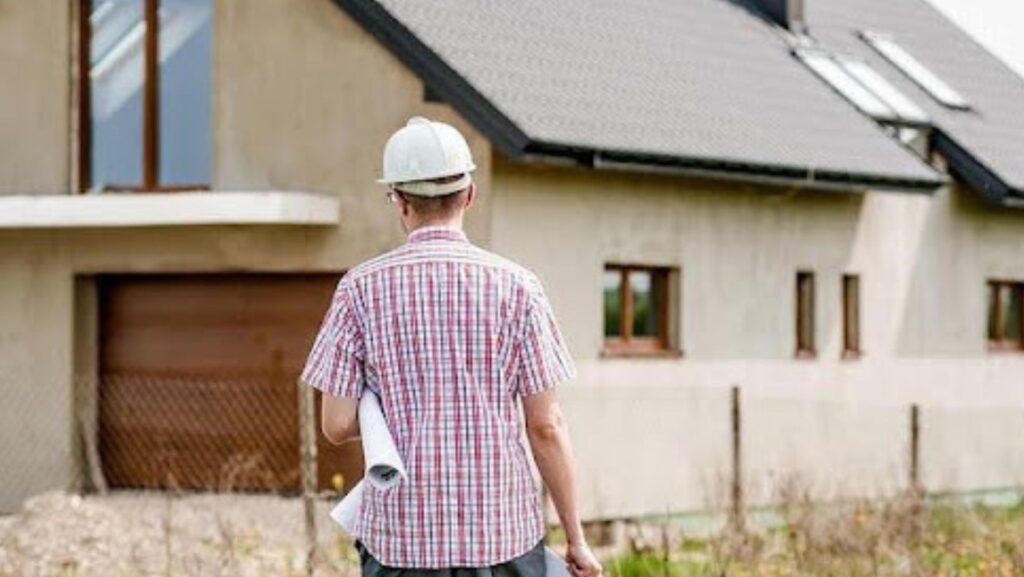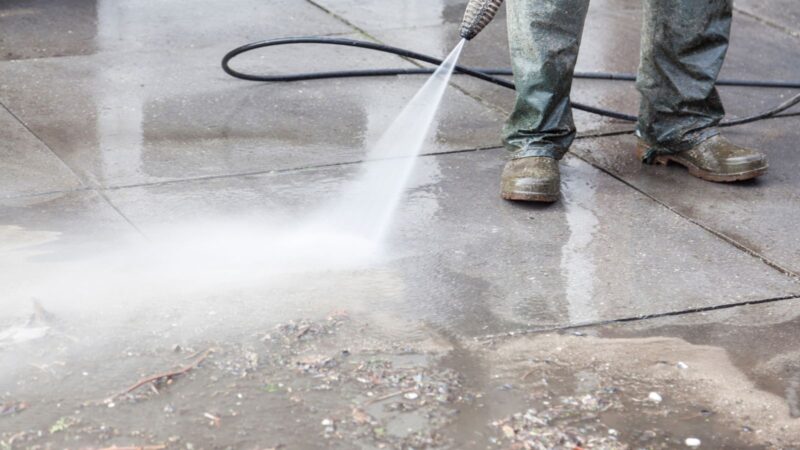
Hiring a contractor should bring improvements, not headaches. Whether you’re remodeling your kitchen, repairing your roof, or upgrading your landscaping, you’re likely placing a great deal of trust (and money) into a contractor’s hands. But what happens when that trust is broken? What if the work causes significant property damage, structural issues, or even injury?
In California, holding the right party accountable for contractor-related damage can be complex. The responsible party isn’t always the contractor themselves, and the answer often depends on several factors, such as the type of damage, the nature of the contract, and whether negligence was involved.
Understanding Contractor Liability in California
Contractor liability refers to the legal responsibility a contractor may bear when their work causes harm, whether that’s property damage, bodily injury, or financial losses. In California, contractors are legally obligated to perform their duties in a safe, professional, and code-compliant manner. When they fail to meet these standards, they may be held liable for the resulting damage.
But it’s not always straightforward. The contractor-client relationship and the terms of the agreement heavily influence who can be held responsible. Was the contractor an independent business? Were they subcontracted by a general contractor? Did the homeowner have any role in directing the work? These details all contribute to determining liability.
In general, a contractor may be liable for damages if they:
- Performed faulty workmanship
- Used substandard materials
- Failed to follow safety codes or building regulations
- Caused damage due to negligence
- Breached the terms of the contract
Whether you’re a homeowner, business owner, or landlord, understanding these basics is key to knowing your rights when something goes wrong.
Types of Damage Commonly Caused by Contractors
Not all construction or renovation-related damage looks the same. Some issues may be visible immediately, while others can take weeks—or even months—to surface. Understanding the different forms of contractor-caused damage can help determine the severity of the issue and how liability should be assessed.
Property Damage
This is the most common type of damage, ranging from broken tiles or scratched flooring to major issues such as water damage from a plumbing error or structural instability resulting from poor framing work. In California, contractors are required to carry liability insurance that covers accidental property damage; however, enforcement and compliance vary.
Structural Damage
When the integrity of a building is compromised, such as when a wall is removed without proper support or a roof isn’t reinforced to code, it can lead to extremely costly repairs. These types of mistakes often trigger claims involving negligence or breach of contract.
Water Intrusion and Mold
Improper waterproofing, roofing, or plumbing work can result in hidden water intrusion, which may lead to mold growth, dry rot, and health issues. In these cases, it’s not just about cosmetic fixes, but also environmental hazards.
Electrical Hazards
Faulty wiring, overloaded circuits, or non-compliance with the National Electrical Code can lead to electrical fires or hazardous short circuits. In severe cases, this can escalate into personal injury claims.
Injury to Occupants or Workers
In some cases, defective construction can lead to injury, for example, a collapsing staircase or an improperly installed railing. If a resident, visitor, or even another contractor is injured due to unsafe workmanship, the liable party may be responsible for medical costs, lost wages, and other damages.
Independent Contractors vs. Employees: Why It Matters
One of the most important distinctions in construction-related liability is whether the person who caused the damage is classified as an independent contractor or an employee. In California, this distinction directly impacts who can be held legally responsible.
Independent Contractors
Most licensed general contractors and subcontractors operate as independent businesses. This means they are responsible for their own insurance, tools, and methods. If an independent contractor causes damage, they, not the homeowner or general contractor, are usually the party held liable.
However, there are exceptions. If a general contractor hires a subcontractor and fails to properly vet or supervise them, the general contractor may also be held liable. Likewise, if the property owner was directly involved in hiring and directing the contractor’s work, they may also be drawn into the legal dispute, especially if negligence can be proven.
Employees
In contrast, if the person who caused the damage is classified as an employee of a contractor or construction company, the employer may be held vicariously liable for that employee’s actions, especially if the damage occurred during the scope of the job.
This distinction becomes even more critical when determining insurance coverage, as different rules apply depending on the worker’s status and their relationship with the hiring party.
California’s ABC Test
To further complicate matters, California employs the ABC Test (under AB5 legislation) to determine whether an individual is an independent contractor or an employee. If the hiring entity controls how the work is done, provides the tools, and the person’s work is part of the company’s usual business, then that person is likely an employee, even if they were labeled as an independent contractor.
This classification can impact liability, workers’ compensation, and your ability to seek damages from a responsible party.
What to Do if a Contractor Causes Damage to Your Property
Discovering damage caused by a contractor can be frustrating and stressful. But how you respond in the hours and days that follow can make a big difference in whether you’re able to recover your losses or get stuck footing the bill. Here are the steps California homeowners and property owners should take if something goes wrong during a construction or remodeling project.
Document Everything Immediately
As soon as you notice damage, take detailed photographs and videos from multiple angles to document the damage. Capture the full scope of the issue and include timestamps if possible. Write down what happened, when you noticed the damage, and who was involved. This documentation will become critical if you file a claim with the contractor’s insurance company or pursue legal action.
Stop Work and Notify the Contractor
Contact the contractor right away and inform them of the issue. In many cases, contractors may offer to fix the damage or file a claim with their insurance provider. However, you should still proceed with caution; do not sign any waivers or settlements without thoroughly reviewing the terms.
Analyze Your Contract
Look over your signed agreement with the contractor. Does it include a clause addressing damage, insurance, or dispute resolution? Are there limitations on liability or specific procedures for resolving issues? Contracts often dictate the first steps you can or should take.
Request Proof of Insurance
Contractors in California are required to carry general liability insurance, and many also have additional coverage, such as builder’s risk or errors and omissions insurance. Request a copy of their policy and file a claim if the damage is covered. If the contractor is uninsured or underinsured, you may need to explore legal action or file a claim under your own homeowner’s insurance policy.
Contact a Construction or Property Damage Attorney
If the contractor denies responsibility, delays the repair process, or fails to adequately repair the damage, legal assistance can make a significant difference. An experienced attorney can help you navigate your options, preserve your rights, and pursue compensation for property loss, repairs, and even emotional distress in severe cases.
Liability in Larger Construction Projects: Who’s Really Responsible?
In larger residential or commercial projects, responsibility doesn’t always fall squarely on one party. Several layers of professionals may be involved, including developers, general contractors, subcontractors, suppliers, and labor crews. When damage occurs, determining who’s liable requires unraveling this web of relationships.
General Contractors
The general contractor (GC) is typically the party responsible for overseeing the overall management of a construction site. They hire subcontractors, oversee progress, and ensure that work complies with plans and codes. In many cases, if a subcontractor or laborer causes damage, the GC may still be liable, especially if the damage resulted from:
- Poor oversight
- Failure to vet subcontractors
- Use of unlicensed professionals
- Noncompliance with building codes or permits
Most general contractors carry liability insurance that covers these scenarios; however, claim denials do occur, particularly if the contractor has violated the terms of their policy.
Subcontractors
Subcontractors are hired by the general contractor to perform specific tasks such as roofing, plumbing, or electrical work. While subcontractors typically carry their own insurance and licenses, some do not. If they cause damage, such as by puncturing a water line during installation, the GC may attempt to shift blame; however, a court may assign joint liability depending on the case’s facts.
If the subcontractor is uninsured or unlicensed, liability could cascade back to the general contractor or even the property owner in rare circumstances.
Developers and Construction Managers
In large developments, a project manager or developer may assume overall control. These entities may also be liable if they failed to enforce safety standards, hired negligent contractors, or cut corners to save costs. These cases often necessitate a more thorough investigation into contractual obligations and site management decisions.
California Laws That Apply to Contractor-Caused Damage
When a contractor damages your property, California law offers multiple legal pathways for you to pursue recovery. These range from straightforward small claims actions to more complex construction defect lawsuits, depending on the extent of the damage and the parties involved.
Construction Defect Law
Under California Civil Code §§ 896–945.5 (known as the “Right to Repair Act” or “SB 800”), homeowners have the right to pursue claims for construction defects—including damage caused by poor workmanship, failure to follow building codes, or use of substandard materials. This law primarily applies to new residential construction but can also impact how courts evaluate contractor negligence in remodels or renovations.
You must give the builder or contractor notice of the issue and an opportunity to inspect and repair the problem before you can file a lawsuit. This pre-litigation process can delay resolution, but it is often necessary to preserve your legal rights.
Negligence and Property Damage Claims
If the damage wasn’t due to a structural defect but instead a one-time act of carelessness, like knocking over a wall or causing flooding, a standard negligence claim may apply. To win a negligence claim, you must prove:
- The contractor had a duty of care (e.g., to perform work safely and competently)
- They breached that duty
- Their breach directly caused damage
- You suffered actual losses (repairs, property damage, lost use of your home, etc.)
These cases often rely on expert testimony, contracts, inspection reports, and photographs of the damage.
Statute of Limitations
California has strict time limits for filing legal claims related to construction damage:
- Three years from the date of damage for property damage claims (Cal. Civ. Proc. Code § 338)
- Four years for written contract breaches (Cal. Civ. Proc. Code § 337)
Failing to act within these deadlines can mean losing your right to compensation, even if your case is strong. That’s why it’s crucial to document everything and respond promptly when problems arise.
Understanding Insurance Coverage for Contractor Damage
Insurance can play a major role in resolving contractor-related damage, but knowing whose insurance applies and what it covers isn’t always straightforward. Both contractors and homeowners typically carry policies that may intersect when something goes wrong.
Contractor’s General Liability Insurance
Licensed contractors in California are generally required to carry general liability insurance. This coverage is designed to protect against third-party claims for:
- Property damage
- Bodily injury
- Legal defense costs
If a contractor or their crew accidentally breaks a pipe, damages a wall, or causes structural damage, their insurance should step in to cover the repairs. However, claim denials are not uncommon, especially if the contractor fails to follow safety protocols or if the insurer argues that the damage falls outside the policy terms.
Homeowner’s Insurance
In some cases, your own homeowner’s insurance may offer a temporary fix while the legal or insurance dispute plays out. Policies often include coverage for accidental damage, particularly if you can prove a third party caused it. However, this route usually comes with a deductible and the risk of increased premiums.
Some homeowners also carry umbrella insurance, which may help cover excess costs if damages exceed the limits of the contractor’s policy.
Filing an Insurance Claim
When filing a claim, whether with your contractor’s insurer or your own, make sure to:
- Document everything with photos, receipts, and statements
- Obtain a repair estimate from a licensed contractor or inspector
- Submit the claim quickly (many policies have tight reporting windows)
- Stay organized by keeping copies of every communication and document
If you hit roadblocks or encounter stalling tactics, a legal professional can help escalate the matter and hold insurers accountable for processing valid claims.
What If the Contractor Is Uninsured or Out of Business?
One of the most stressful situations a homeowner can face is realizing that the contractor responsible for damaging their property is either uninsured or no longer in business. Unfortunately, it happens more often than people think, especially with unlicensed or fly-by-night operations.
No Insurance? You Still Have Options
If the contractor doesn’t carry general liability insurance or if their policy has lapsed, you may still be able to recover damages through:
- Small Claims Court
- Superior Court Lawsuit
- Contractor’s Bond
- Homeowner’s Insurance
Contractor Goes Out of Business
When a contractor shutters their company, especially during or shortly after your project, it complicates recovery. But it doesn’t make it impossible. You may be able to:
- Pursue the individual contractor personally if they were a sole proprietor.
- Investigate other liable parties, such as subcontractors or general contractors who hired them.
- Use the contractor’s bond, if still active.
- Seek mediation or arbitration if your contract requires it.
In some cases, damage may result in criminal penalties if fraud or code violations are involved. Reporting to the CSLB and consumer protection agencies may open further avenues for recourse.
How to Build a Strong Case and Protect Your Rights
Whether the damage is minor or catastrophic, preserving evidence and acting quickly are key to protecting your legal rights. The more organized and proactive you are, the easier it becomes to prove your case and recover damages from a contractor or their insurer.
Document the Damage Immediately
Start by taking high-quality photos and videos from multiple angles. Include timestamps if possible, and don’t make any repairs until you’ve captured the full extent of the damage. Write down everything you observe—even if it seems minor at the time.
Gather Relevant Paperwork
Keep all of the following in a safe, organized place:
- Your contract with the contractor
- Invoices and receipts
- Emails, texts, and notes from phone calls
- Any change orders or written agreements about adjustments to the scope of work
- Warranties or guarantees
This paper trail helps show that you upheld your end of the agreement and that the contractor was clearly responsible for the affected area.
Get a Professional Inspection
Hiring an independent inspector or licensed contractor to assess the damage adds credibility to your claim. Their report can confirm what went wrong, who’s responsible, and what it will cost to fix.
Report the Incident to Licensing Authorities
If the contractor is licensed in California, file a complaint with the Contractors State License Board (CSLB). This adds a layer of accountability and may uncover other complaints or disciplinary actions that support your case.
Consult a Legal Professional
If the damage is serious, involves injury, or if insurance companies are stonewalling you, you may need legal help. A qualified attorney can handle communication, negotiations, and, if necessary, litigation, helping you avoid costly mistakes and delays.
This is especially important in situations involving personal injury. When construction-related accidents lead to harm, an injury law firm may be the best resource for protecting your interests and pursuing fair compensation.
Don’t Let Contractor Mistakes Go Unanswered
Hiring a contractor should be the start of an exciting project, not the beginning of a legal nightmare. However, when mistakes, negligence, or substandard work result in property damage or personal injury, it’s crucial to act swiftly and strategically. California law provides several paths for holding contractors accountable, especially when proper licensing, insurance, and contracts are in place.
Whether your contractor accidentally burst a pipe, tore through a support beam, botched a foundation, or caused injury through unsafe practices, you deserve answers—and possibly compensation. From small claims court to filing a bond claim to pursuing a full-scale lawsuit, there are options available for nearly every situation.
The key is knowing your rights, gathering evidence, and understanding who can be held responsible. In many cases, that responsibility may extend beyond just the contractor, especially if other parties, such as subcontractors or property managers, contributed to the damage.
If you’ve suffered a serious property loss or injury, remember that help is available. While many homeowners feel overwhelmed or outmatched, especially when insurance companies get involved, the right steps and resources can level the playing field. Start by documenting everything, reviewing your agreements, and if necessary, consulting professionals who thoroughly understand contractor liability.
Don’t let silence, confusion, or intimidation prevent you from getting the repairs and justice you deserve.













